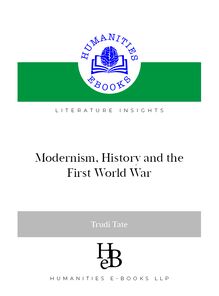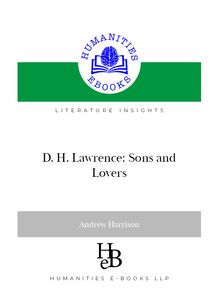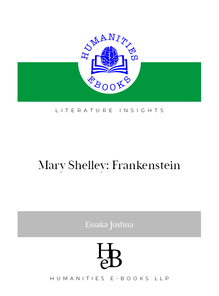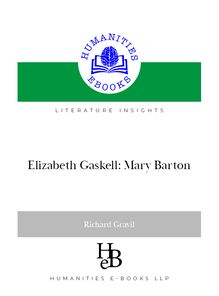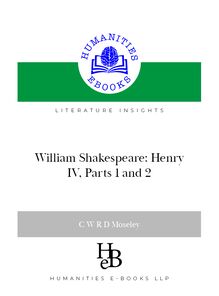-
 Univers
Univers
-
 Ebooks
Ebooks
-
 Livres audio
Livres audio
-
 Presse
Presse
-
 Podcasts
Podcasts
-
 BD
BD
-
 Documents
Documents
-
- Cours
- Révisions
- Ressources pédagogiques
- Sciences de l’éducation
- Manuels scolaires
- Langues
- Travaux de classe
- Annales de BEP
- Etudes supérieures
- Maternelle et primaire
- Fiches de lecture
- Orientation scolaire
- Méthodologie
- Corrigés de devoir
- Annales d’examens et concours
- Annales du bac
- Annales du brevet
- Rapports de stage
La lecture à portée de main
107 pages
English
Découvre YouScribe en t'inscrivant gratuitement
Je m'inscrisDécouvre YouScribe en t'inscrivant gratuitement
Je m'inscris
Obtenez un accès à la bibliothèque pour le consulter en ligne
En savoir plus
En savoir plus
107 pages
English
Obtenez un accès à la bibliothèque pour le consulter en ligne
En savoir plus
En savoir plus

Description
Emma is Jane Austen's masterpiece and one of the supreme achievements of English fiction.
Sujets
Informations
| Publié par | Humanities eBooks |
| Date de parution | 11 janvier 2021 |
| Nombre de lectures | 4 |
| EAN13 | 9781847600806 |
| Langue | English |
| Poids de l'ouvrage | 1 Mo |
Informations légales : prix de location à la page 0,0250€. Cette information est donnée uniquement à titre indicatif conformément à la législation en vigueur.
Extrait
Reading Jane Austen Emma
Neil Wenborn
Readingt
*This book is designed to be read in single page view, using the ‘ît page’ command. *To navigate through the contents use the hyperlinked ‘Book-marks’ at the left of the screen. *To search, click the magnifying glass symbol and select ‘show all results’. *For ease of reading, use <CTRL+L> to enlarge the page to full screen, and return to normal view using < Esc >. *Hyperlinks (if any) appear in Blue Underlined Text.
Permissions
Your purchase of this ebook licenses you to read this work on-screen. No part of this publication may be otherwise reproduced or transmitted or distributed without the prior written permission of both the copyright owner and the publisher. You may print one copy of the book for your own use but copy and paste functions are disabled. Making or distributing copies of this book would constitute copyright infringement and would be liable to prosecution. Thank you for respecting the rights of the author.
ISBN 9781847600806
J
Reading ane Austen Emma
Neil Wenborn
Literature Insights ☼ Humanities-Ebooks
Copyright
© Neil Wenborn, 2008, 2014
Cover Image: Courtesy of the University of Texas Libraries, The University of Texas at Austin
The Author has asserted his right to be identiîed as the author of this Work in accordance with the Copyright, Designs and Patents Act 1988.
Published in 2008 and re-issued in 2014 byHumanities-Ebooks, LLP,Tirril Hall, Tirril, Penrith CA10 2JE
Contents
The Author Abbreviations Introduction 1. Jane Austen in her Time 1.1 Life and Work 1.2 The Historical Background 1.3 The Literary Context 2. WritingEmma 2.1 Bits of Ivory? Jane Austen’s Craft of Fiction 2.2 The Composition ofEmma 3Emmain the Marketplace 3.1 Publication History 3.2 Readership History 4. ReadingEmma 4.1 Volume I (Chapters 1 to 18) 4.2 Volume II (Chapters 19 to 36) 4.3 Volume III (Chapters 37 to 55) 5. Emma and the Critics 5.1 The First Half-century 5.2 1870 to 1939 5.3 1939 to the Present 6 Bibliography 6.1 Main Text 6.2 Biography and Letters 6.3 Criticism
The Author
Neil Wenborn graduated in English from Magdalene College, Cambridge, and worked at the Bodleian Library in Oxford before pursuing a career in publishing, becoming Editorial Director of one of the UK’s leading independent publishers. Since 1989 he has been a freelance writer and publishing consultant and has published widely both in Britain and in the United States. His works include biogra-phies of Haydn, Stravinsky and Dvořák. He is co-editor of the highly respectedHistory Today Companion to British History (Collins & Brown) andA Dictionary of Jewish–Christian Relations(Cambridge University Press). A collection of his poetry,Firedoors, is published by Rockingham Press.
Abbreviations
L: Deirdre Le Faye, ed.,Jane Austen’s Letters(Oxford & New York: Oxford UP, 3rd ed. 1995) Memoir: James Edward Austen-Leigh,A Memoir of Jane Austen, ed. R. W. Chapman (Oxford: Clarendon Press, 1926) NA: Jane Austen,Northanger Abbey, ed. R. W. Chapman (Oxford: Clarendon Press, 1923) PP: Jane Austen,Pride and Prejudice, ed. R. W. Chapman (Oxford: Clarendon Press, 1923 and reprints) Southam 1: B. C. Southam, ed.,Jane Austen: The Critical Heritage, Vol. 1, 1811–1870 (London: Routledge, 1968) Southam 2: B. C. Southam, ed.,Jane Austen: The Critical Heritage, Vol. 2, 1870–1940 (London: Routledge, 1987) SS: Jane Austen,Sense and Sensibility, ed. R. W. Chapman (Oxford: Clarendon Press, 1923)
All page references forEmmaare to R. W. Chapman’s edition (Oxford: Clarendon Press, 1923).
The author and publishers gratefully acknowledge the authors, edi-tors and publishers of these sources, and of the other publications which are listed in the bibliography.
Introduction
Emmais among the supreme achievements of English îction. If not Jane Austen’s most popular work—that accolade would no doubt go toPride and Prejudice—it is surely her most inexhaustible. Written in fourteen months during the closing phase of the Napoleonic Wars, and set in a tight-knit îctional Surrey village,Emmais a book com-pletely dominated by the personality of its eponymous heroine. It is famously a novel in which very little actually happens: its drama is above all the psychological drama of Emma Woodhouse herself. But perhaps because its central character is one of the most living, and most divisive, heroines in îction,Emmais also one of the most variously interpreted novels in the language. It has been seen as the story of a woman’s humiliation and reform and as a rallying cry for female authority, as a template of the modern detective novel and as a cautionary tale about the dangers of unregulated imagination. It has been read as a book about reading and a book about authorship, and has yielded subtexts on patriotism, health and religious conversion, among many others. People have been writing aboutEmmaever since Walter Scott published the îrst review almost two hundred years ago, but the novel’s rich multidimensionality continues to offer new per-spectives and new challenges not only to each new generation of crit-ics, but also to each reader on each new reading. As Reginald Farrer observed in his classic centenary essay on Jane Austen, ‘while twelve readings ofPride and Prejudice give you twelve periods of pleas-ure repeated, as many readings ofEmmagive you that pleasure, not repeated only, but squared and squared again with each perusal, till at every fresh reading you feel anew that you never understood any-thing like the widening sum of its delights’. Farrer was also among the îrst critics to draw attention toEmma’s unprecedented textural density—what he called ‘the manifold com-plexity of the book’s web’, in which ‘every sentence, almost every
10
Reading Jane Austen:Emma
epithet, has its deînite reference to equally unemphasised points 1 before and after’. The result is a fabric of astonishing narrative and thematic unity, across which events, scenes, even individual words, resonate with one another as if it were a single sounding-board. One of the main unifying principles, of course, is the mind of Emma Woodhouse herself. The heroine is absent from centre-stage for only a handful of pages, and almost everything we see in the novel we see, or think we see, through her eyes (to such an extent that the trace it leaves in the memory is akin to îrst-person narrative). In fact, the way Jane Austen manages the relationship between the nar-rator’s perspective and the heroine’s is one of the great high-wire acts of English literature. By allowing us, in the words of one critic, ‘to 2 share Emma’s inner life without being limited by it’ Austen places us simultaneously inside and outside her heroine’s consciousness. In a sense,Emmathus has two overlapping narrators (indeed, one way of looking at Jane Austen’s much-discussed irony is to see it as the principal means by which she regulates the extent of this overlap at any given moment). Emma disposes the lives of those around her just as her author does, and while the cast of characters is identical in both cases, the tension between the two emerging patterns provides much of the novel’s narrative and thematic drive, as well as much of its comedy. The critic John F. Burrows has remarked that every ripple in the 3 surface of Jane Austen’s work repays attention. Of all the novels, this is truest ofEmma. As Austen’s brother James and his wife were the îrst to recognize (see 5.1 below),Emma’s surface is very differ-ent from that of its predecessors. For all the classical balance of the novel’s structure, its language is in many respects radically unstable. Gone, for the most part, are the ironically inected epigrammatism ofPride and Prejudiceand the quasi-Augustan periods ofMansield Park. In their place is a prose which seems deliberately stripped of
1 ‘Jane Austen, ob. July 18, 1817’ in F. Stafford, ed.,Jane Austen’sEmma: A Casebook(Oxford: Oxford UP, 2007), p.75. 2 A. Walton Litz,Jane Austen: A Study of her Artistic Development(London: Chatto and Windus, 1965), p.149. 3 ‘Style’ in Edward Copeland, and Juliet McMaster, eds,The Cambridge Companion to Jane Austen(Cambridge: Cambridge UP, 1997), p.187.
-
 Univers
Univers
-
 Ebooks
Ebooks
-
 Livres audio
Livres audio
-
 Presse
Presse
-
 Podcasts
Podcasts
-
 BD
BD
-
 Documents
Documents
-
Jeunesse
-
Littérature
-
Ressources professionnelles
-
Santé et bien-être
-
Savoirs
-
Education
-
Loisirs et hobbies
-
Art, musique et cinéma
-
Actualité et débat de société
-
Jeunesse
-
Littérature
-
Ressources professionnelles
-
Santé et bien-être
-
Savoirs
-
Education
-
Loisirs et hobbies
-
Art, musique et cinéma
-
Actualité et débat de société
-
Actualités
-
Lifestyle
-
Presse jeunesse
-
Presse professionnelle
-
Pratique
-
Presse sportive
-
Presse internationale
-
Culture & Médias
-
Action et Aventures
-
Science-fiction et Fantasy
-
Société
-
Jeunesse
-
Littérature
-
Ressources professionnelles
-
Santé et bien-être
-
Savoirs
-
Education
-
Loisirs et hobbies
-
Art, musique et cinéma
-
Actualité et débat de société
- Cours
- Révisions
- Ressources pédagogiques
- Sciences de l’éducation
- Manuels scolaires
- Langues
- Travaux de classe
- Annales de BEP
- Etudes supérieures
- Maternelle et primaire
- Fiches de lecture
- Orientation scolaire
- Méthodologie
- Corrigés de devoir
- Annales d’examens et concours
- Annales du bac
- Annales du brevet
- Rapports de stage
Signaler un problème
YouScribe
Le catalogue
Le service
© 2010-2024 YouScribe
